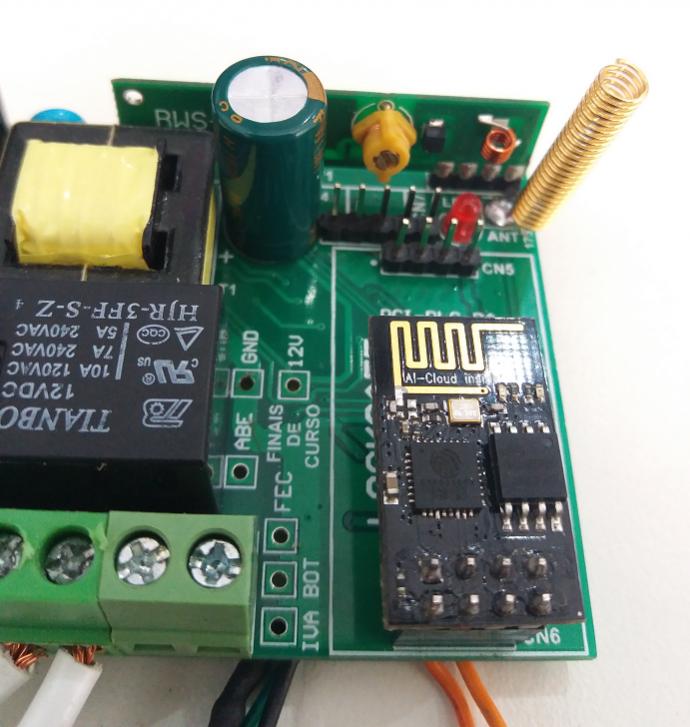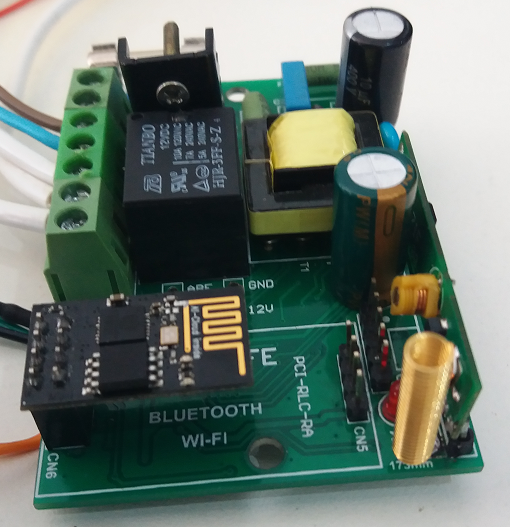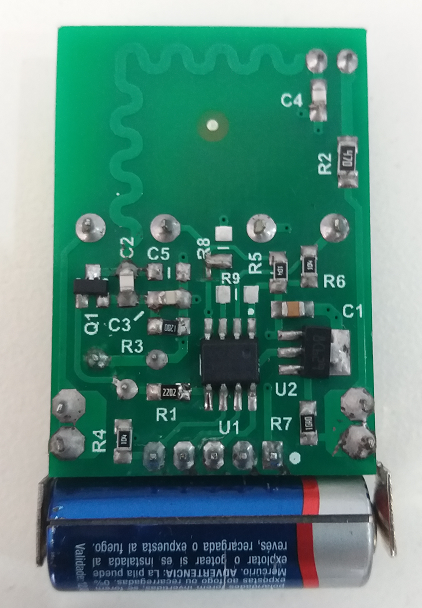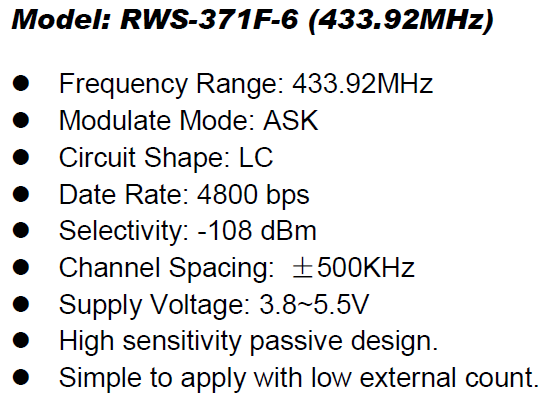2.4GHz WiFi module causing interference on 433MHz RF receiver module
As can be seen on the photos, I have tested 433MHz module antenna with helicoidal and straight wire (17,3cm and 13cm), and with 13cm long wire the result is even worst.
This board have 12V (100KHz - LNK626DG) power supply that is generated from the mains, then the 12V is reduced to 5V (7805) and 3.3V (LM1117IMP-3.3), two linear voltage regulators. The board has a ground plane also, shared by all them.
The only thing connected to the 5V output is the 433MHz RF receiver. At the input of 5V regulator I have a 100nF ceramic, and at output 10uF ceramic 0805 16V, and at the two 5V supply pins of the 433MHz module I have a 100nF ceramic. I have checked the 5V rail with a scope, and there is very low noise there, almost a straight line. When the ESP module is connected or when not connected, I have observed almost the same signal on 5V line. The ESP-01 is being supplied by a regulated 3.3V (this power supply will be changed by a buck converter of 1.5MHz on the next prototype). At the output of this regulator I have one 22uF ceramic, and very close the the 3.3V pin of the ESP module I have 2x 22uF 0805 10V ceramic capacitors.
In that board it is also possible to connect a bluetooth module like the HC-05 (bluetooth is also 2.4GHz) in place of ESP-01, and when the BT module is connected to the board and working, it does not cause interference on the 433MHz RF like the ESP module do, maybe due to the low-power RF of bluetooth.
I have noticed that the 3.3V output is at one edge of the PCB and the ESP connector is at the other edge of the PCB... and there is a 3.3V trace crossing the PCB from one side to another.
Do somebody know if is it possible in my board, to have a good performance on 433MHz RF and use the ESP module at the same time? Because in my board the ESP module seems to be causing interference on the 433MHz module's receiving capability.
Why is this interference occuring? And what could be done to solve?
Is it layout issue?
Datasheet of the 433MHz receiver module: http://www.web66.com.tw/_file/C3/317...f?t=2019091807
Regards




There's apparently insufficient selectivity build into the receiver RF frontend, so it can be easily overloaded by the 2.4 GHz transmitter. Use a better designed receiver module or add an external filter.
Hi FvM.
What kind of filter do you mean?
E.g. a low pass.
None of those regulators have any PSRR left at the fundamental
so I wouldn't rule out conducted emissions / susceptibility as
potential actors. Maybe a RF choke between regulators and
each of their "clients" is a worthwhile experiment.
I'd bet you could find 433MHz notch-pass filters from Mini-Circuits
or somebody. The problem could just be LNA saturation from
the close-in TX if not trapped out. Less than a decade away
from RX frequency may mean only partial relief from a single
or even two-pole filter.
Most 'scope channels will be attenuating 433MHz a little,
and 2GHz fuggedaboudit. Probes are even more limiting.
I think a "sniffer" spectrum analyzer exercise would be better
suited to the task (unless you have a way better 'scope
than I do - 5GHz sample, 500MHz BW, 200MHz probes).
Take a survey with one radio off, then the other one off,
then both on - maybe differences will be informative (like
is it an aggressor / victim problem, or are they somehow
intermodulating and making other product tones?
I see no internal domain-shielding; maybe stand up a piece
of copper soldered to the ground plane, between the two
radios (or put them each in their own can)? Hell, they used
to have to do that for even lower frequency TV assemblies.
If this is a jitter / phase noise problem, maybe AM-PM
conversion of the 2HGz into phase noise on the 433MHz,
maybe another answer is to lower the data rate on the
433MHz radio, "opening the eye" proportionally? Can you
get at "internal" CK, DATA to observe eye quality with
the 2.5GHz on and off?
Using a SMPS to drive a BT Module is not a good idea unless the PS is very clean.Placing this BT Module around this PSU is an worse idea due to EMI coming from different and unknown sources..
All will create a serious EMI and it is not easily preventable.Also this will be a main source of unwanted and non predictible spurs in the spectrum.
If I were you, I try the BT Module with a clean battery powered PSU with different distance/angle to 433 MHz module
Different possible interference mechanisms are addressed in the previous posts. While dick_freebird and BigBoss are assuming power supply noise, I referred to receiver blocking by 2.4 GHz signals entering the antenna input.
Of course both can happen.
